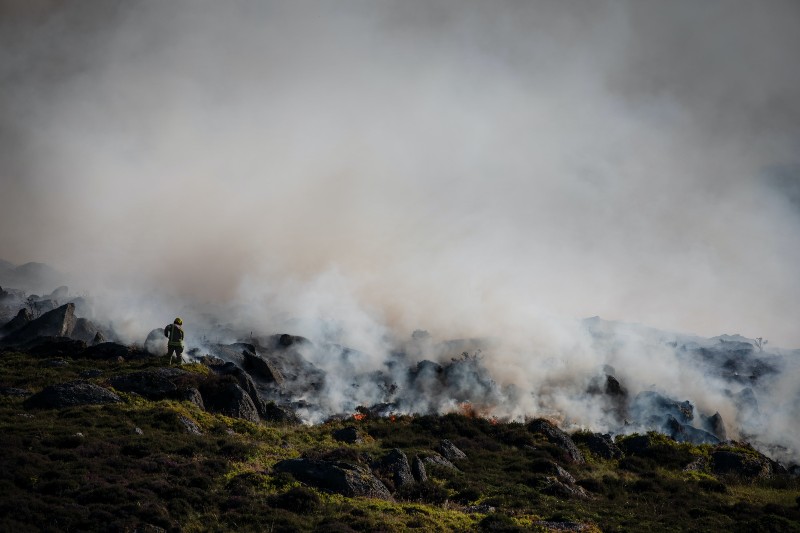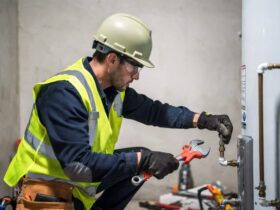No products in the cart.
Protecting Your Home From Wildfires

Wildfires are an unfortunate but inevitable part of life in California. Not only can they be deadly to human and animal life, but the devastation they wreak can cause long-lasting damage to families. A wildfire can wipe out years or even generations of personal belongings and history in the space of hours, and leave families starting over from nothing.
While there’s no guaranteed safeguard against wildfires, there are steps you can take to help keep your home and family safer.
Choose Your Location Carefully
If you’re about to purchase or build a home in California, now is the time to maximize your fire safety. Wildfires tend to be most dangerous in areas with hills, mountains, forests, and wind corridors. They’re also more dangerous around areas with large amounts of grassy vegetation.
Wildfires typically ravage areas with hills, mountains, and forests, wind corridors, and in areas with certain types of vegetation (homes near grassy vegetation are at a higher risk than those near shrubs, for instance). While it may not be ideal (or possible) to avoid all these terrain features — especially in California — there are places you can choose that may reduce your risk.
Defensible Space Around Your Home
Creating a defensible space around your home is not only good practice for helping safeguard your property from wildfires — it’s also required by law in California’s Responsibility Areas.
What’s defensible space? In short, it means keeping brush and vegetation a certain distance away from your home. This is not only useful indirectly creating a buffer between your home and flammable trees and shrubs, but it’s also important to the safety of firefighters who may show up to protect your home.
There are two “zones” that makeup properly prepared defensible space. Zone 1 extends 30 feet from any buildings and structures. It requires removing all dead plants, weeds, and overhanging branches near the house. Trees must be trimmed to keep branches a minimum of ten feet apart from other trees. There must also be space created between flammable trees and shrubs and other flammable items like patio furniture and woodpiles.
Zone 2 extends a full 100 feet from structures, and requires cutting grass to a maximum height of 4 inches, creating horizontal space between shrubs and trees, and removing flammable detritus (such as pinecones, branches, bark, twigs, etc.) from the area.
Protect from Embers: Install a Sprinkler System
A wildfire doesn’t have to come in direct contact with your home for it to catch ablaze. One of the reason defensive areas exist to begin with is because they create more distance between a home and the floating embers that can easily cause the structure to catch fire.
Exterior sprinkler systems have been shown to drastically reduce the loss of homes to fires. In short, wet homes burn much less easily than dry homes. Sprinklers reduce the probability of a home catching fire by hydrating potential fuels for fire, increasing humidity, and making a cooler “micro-climate” around the house.
Running an external home sprinkler system for only a few hours before a wildfire shows up can make all the difference. Many modern sprinkler systems include remote activation, so the sprinkler can go into action after you’ve already evacuated (or if you’re not home in the first place).
However, a sprinkler system is just one part of protecting your home from the menace of floating embers. You should further safeguard your home by placing wire mesh across vents, eaves, attic windows, doggy doors, etc. to prevent embers from getting inside the structure.
Build Your Home with Fire-Resistant Material
Another thing to consider if you’re looking to build a new home in California: building with fire-resistant materials. Wood is not always the best choice for a home exterior. Wooden homes can go up in minutes if they catch fire and can be much harder to protect against a blaze.
For example, insulated concrete forms (ICF) are polystyrene blocks that connect together to create a “shell” around your home. They’re one of the most heat-resistant materials there are. A concrete foundation is a great way to increase the fire resistance of your home — and there are plenty of modern, attractive building materials with good heat resistance that aren’t wood.
If you’re already living in a wooden home, there are still things you can do to reduce the danger of fire, such as replacing roof shingles, eaves, overhangs, decks, etc. with more updated materials.
Make Sure Your Insurance Includes Fire Damage
Of course, no matter how many precautions you take, there’s never any absolute guarantee your home will stay safe from wildfires. There’s still a chance, however slim, that you could lose everything. That’s why it’s especially important to find the best fire insurance policy you can, and make sure you keep your list of valuables in your home updated — so if the worst should happen, you’ll be prepared.















Leave a Reply